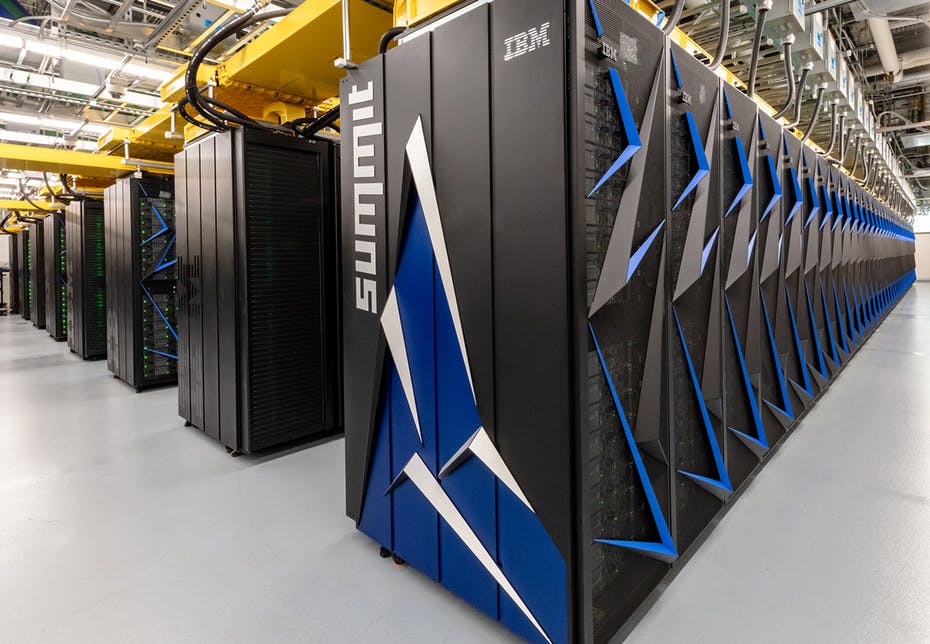Supercharge Your Business with GPU Clusters

One technological advancement that has revolutionized the way businesses operate is the use of GPU clusters. These clusters, comprised of multiple Graphics Processing Units (GPUs), offer unparalleled computational power, enabling businesses to tackle complex tasks with lightning-fast speed. From accelerating data analysis to powering machine learning algorithms, GPU clusters have become indispensable tools for organizations across various industries.
Understanding GPU Clusters
At the heart of GPU clusters lies the concept of parallel processing. Unlike traditional Central Processing Units (CPUs), which excel at sequential processing, GPUs are optimized for parallel computations. This makes them ideal for handling tasks that involve massive datasets or require intensive mathematical calculations, such as image processing, simulations, and deep learning.
A GPU cluster consists of multiple GPUs interconnected through high-speed networks. These clusters work in tandem to divide computational tasks into smaller segments and process them concurrently, significantly reducing the time required to complete complex operations. By harnessing the collective power of multiple GPUs, businesses can achieve levels of performance that were previously unattainable with traditional computing setups.
Applications Across Industries
The versatility of GPU clusters makes them valuable assets for businesses operating in various sectors:
1. Healthcare:
In the healthcare industry, GPU clusters are revolutionizing medical imaging, drug discovery, and genomic analysis. By processing large volumes of medical images with unprecedented speed, healthcare providers can diagnose conditions more accurately and develop personalized treatment plans for patients. Additionally, researchers can leverage GPU clusters to analyze genomic data and accelerate the discovery of new drugs and therapies.
2. Finance:
In finance, milliseconds can make the difference between profit and loss. GPU clusters enable financial institutions to perform high-frequency trading, risk analysis, and fraud detection in real-time. By processing vast amounts of market data with exceptional speed, traders can make split-second decisions and capitalize on market opportunities before their competitors. Moreover, GPU-accelerated algorithms enhance the accuracy of risk models, enabling banks to mitigate financial risks more effectively.
3. Manufacturing:
In manufacturing, optimizing production processes and quality control are paramount. GPU clusters empower manufacturers to simulate complex manufacturing scenarios, optimize production schedules, and detect defects in real-time. By analyzing sensor data from IoT devices and production equipment, manufacturers can identify inefficiencies, minimize downtime, and improve overall productivity. Additionally, GPU-accelerated simulations enable engineers to design and test prototypes rapidly, accelerating the product development cycle.
4. Gaming and Entertainment:
In the gaming and entertainment industry, delivering immersive experiences requires powerful graphics rendering capabilities. GPU clusters power the rendering engines behind cutting-edge video games, virtual reality (VR) experiences, and special effects in movies and television shows. By rendering lifelike graphics in real-time, content creators can captivate audiences and push the boundaries of visual storytelling.
Unlocking Business Potential
The adoption of GPU clusters can supercharge business operations in several ways:
1. Faster Insights:
With GPU clusters, businesses can analyze vast datasets and extract actionable insights in a fraction of the time required by traditional computing systems. Whether it’s analyzing customer behavior, optimizing supply chain logistics, or predicting market trends, GPU-accelerated analytics enable businesses to make informed decisions swiftly.
2. Enhanced Productivity:
By accelerating computationally intensive tasks, GPU clusters streamline workflows and empower employees to focus on value-added activities. Whether it’s data scientists training machine learning models, engineers running simulations, or designers rendering 3D graphics, GPU-accelerated tools enable teams to accomplish tasks more efficiently, ultimately boosting productivity.
3. Competitive Advantage:
In today’s fast-paced business environment, gaining a competitive edge is essential for long-term success. By leveraging GPU clusters to innovate faster, deliver superior products and services, and respond swiftly to market dynamics, businesses can outpace their rivals and establish themselves as industry leaders.
4. Scalability and Flexibility:
GPU clusters offer scalability and flexibility to adapt to evolving business needs. Whether it’s scaling computational resources to handle growing workloads or deploying specialized algorithms for specific tasks, GPU clusters provide the agility businesses need to stay ahead of the curve.
Challenges and Considerations
While the benefits of GPU clusters are undeniable, businesses must also be aware of potential challenges, including infrastructure costs and software optimization. Deploying GPU clusters often involves managing hardware resources efficiently, which is where solutions like ‘bare metal as a service‘ (BMaaS) come into play. BMaaS providers offer dedicated hardware resources without the overhead of virtualization, providing businesses with the raw computing power needed to harness the full potential of GPU clusters.
Optimizing software for GPU acceleration requires specialized expertise and may involve rewriting existing algorithms or adopting GPU-accelerated libraries and frameworks. Businesses need to invest in training or hiring talent with expertise in parallel programming and GPU optimization to maximize the performance of their clusters.
Conclusion
GPU clusters represent a paradigm shift in computing, empowering businesses to tackle complex challenges with unprecedented speed and efficiency. From healthcare and finance to manufacturing and entertainment, GPU clusters are driving innovation across industries, unlocking new possibilities and transforming the way businesses operate. By harnessing the power of parallel processing, businesses can supercharge their operations, gain a competitive advantage, and chart a course towards success in the digital age.









